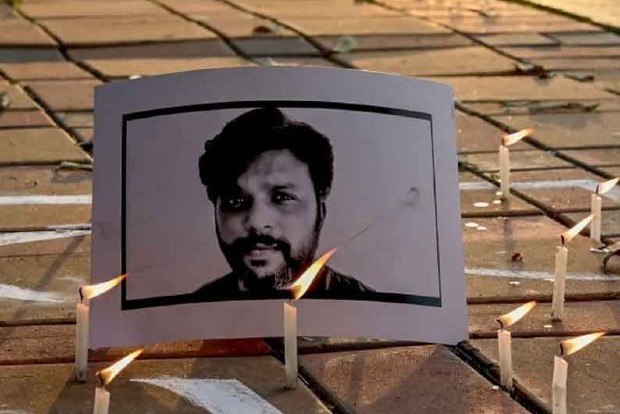Begin typing your search...
Editorial: Journalists in the danger zone
The concept of an occupational hazard might be a mainstay in several fields of employment. But, over the past few decades, the threat of death or grievous injury seems to have become a part and parcel of the journalistic profession.

Chennai
The recent death of Danish Siddiqui, an Indian photojournalist and Pulitzer Prize winner, whose poignant coverage of the Rohingya refugee crisis and the COVID-19 fallout in India, earned him plaudits globally, was a chilling reminder of the risks undertaken by members of the journalist fraternity when carrying out their duties in conflict zones. Siddiqui, who died in Kandahar in Afghanistan, in the aftermath of a crossfire between Afghan security forces, and the Taliban is yet another sad addition to the growing list of media personnel who paid with their lives in pursuit of the truth.
Unfortunately, the looming prospect of fatality in the line of work is not a phenomenon restricted to the geographic fault-lines in war-torn and conflicted regions. Last week, a renowned Dutch investigative journalist, Peter R de Vries, who is said to be one of the Netherlands’ best-known journalists, succumbed to gunshot wounds sustained earlier this month. He was famous for his relentless pursuit of figures in the underworld, as well as bringing to justice sex offenders and kidnappers. Closer home, last month in Pratapgarh, UP, journalist Sulabh Srivastava was found dead after he had filed a police complaint on being threatened due to his reporting on the liquor mafia. According to the Committee to Protect Journalists, as many as 53 journalists were killed in Afghanistan between 1992 and 2021. In India, a democracy with a functional law and order mechanism, the statistics are equally disturbing. The number of Indian journalists who were eliminated during the same period is 52.
Last December, the media watchdog Reporters without Borders (RSF) had reported that a total of 50 journalists were killed worldwide in 2020. The number is similar to the casualties from 2019 when 53 journalists were killed. In a shocking turn of events, the group reported that the percentage of journalists killed in countries at war had begun dropping at 32% while more reporters were being murdered in countries that were not at war, at 68%. The rider was the fact that fewer journalists were on the field this year due to the COVID-19 pandemic. The precision with which media targets were being eliminated was highlighted by RSF’s study which said that 84% of the journalists, who were killed in their line of work in 2020, were deliberately targeted as compared to 63% in 2019.
In a politically volatile world where extreme acts of violence have become commonplace, it might be convenient to think journalists are victims of the risks of their professions. But we beg to differ. Treating their murder as collateral damage in the larger scheme of things is one of the most indifferent approaches that a government can adopt. Yes, journalists are soft targets, and yes, they cannot afford bodyguards. They also do not enter every conflict zone, armed with a bulletproof jacket.
The kin of journalist Gauri Lankesh is still languishing for justice four years after she was shot down by gunmen in Bengaluru. Every time, such travesties of justice take place, and murderers of newspersons escape culpability, perpetrators are being egged on to repeat the feat, and thumb their noses at effete administrations that can only bury themselves in long-drawn processes and paperwork.
The government should not allow such acts to go unpunished. Perpetrators of violence against journalists must be prosecuted to the fullest extent of the law. Otherwise, it will weigh on the collective conscience of our country, that guardians of the fourth estate are reduced to statistics that are forgotten even before they are mourned.
Visit news.dtnext.in to explore our interactive epaper!
Download the DT Next app for more exciting features!
Click here for iOS
Click here for Android
Next Story



